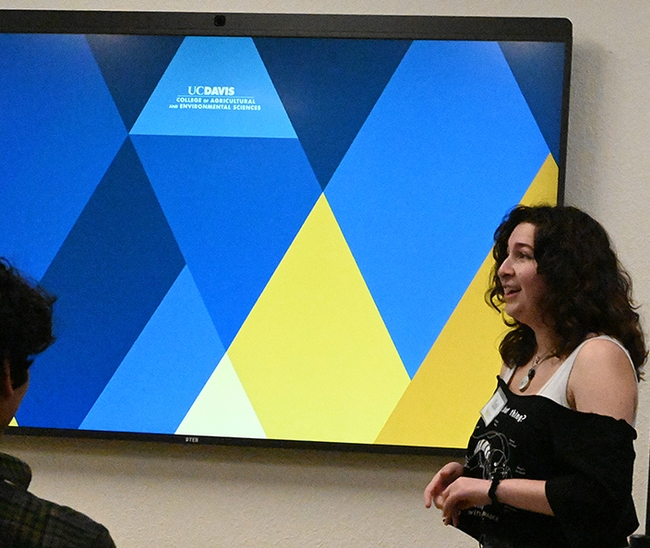
UC Davis third-year entomology student Sol Wantz, an intern at the Bohart Museum of Entomology, president of the UC Davis Entomology Club, and an undergraduate researcher in the Neal Williams' lab, shed light on "Grasshoppers, Crickets and Katydids" when she delivered a presentation at a recent Bohart Museum open house.
Jerusalem crickets, aka "potato bugs," drew the most interest.
The wingless insects, members of the family, Stenopelmatidae, are omniverous, feeding on both plants and animals, Wantz told the crowd. They are ground-dwelling insects found "mostly in North America, some in Asia and Africa," she said, and they include 7 genera and 67 species.
"They have a unique method of sound production," Wantz said. "They thump their abdomen against the ground to produce a surprisingly loud noise. Their thumping patterns can be used to identify their species."
Sol, who grew up in the Bay Area community of Belmont, is the first entomologist in her family. "My parents and brother all love insects, but I am the only one hoping to make a career out of entomology."
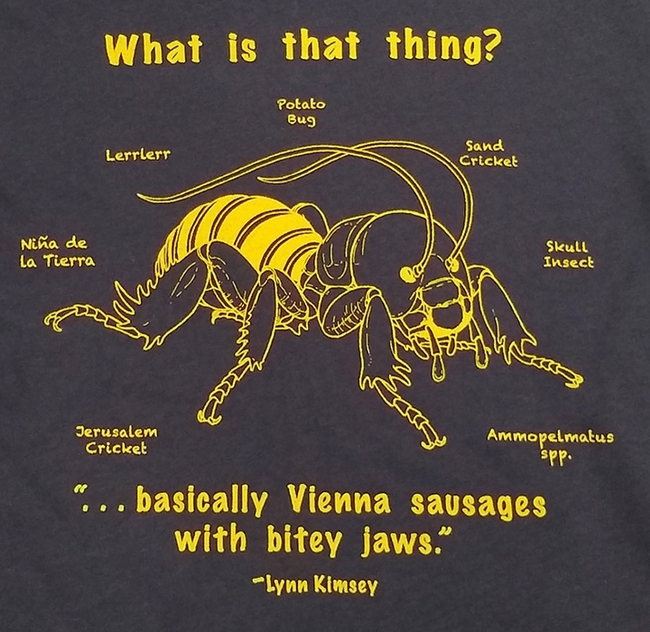
Jerusalem Cricket T-Shirt. The Bohart Museum sells a Jerusalem cricket t-shirt in its gift shop, the result of so many queries beginning with "What is that thing?" Kimsey's humorous answer, "basically Vienna sausages with bitey jaws," appears on the shirt. The art is the work of UC Davis student and Bohart volunteer Allen Chew, and the design by UC Davis doctoral alumnus Professor Fran Keller of Folsom Lake College, a Bohart Museum scientist.
Wantz also discussed grasshoppers and katydids. "The katydid genus Supersonus produces the highest frequency sound of any known animal, up to 150 kHz!" she said. "For reference, humans can only hear between 0 and 20 kHz."
Wantz grew up in the Bay Area community of Belmont. "My parents and brother all love insects, but I am the only one hoping to make a career out of entomology." Her parents, Adam Wantz and Patti Leggett-Wantz, were among those attending the seminar.
The Bohart Museum, located in Room 1124 of the Academic Surge Bulding, 455 Crocker Lane, is directed by Professor Jason Bond, the Evert and Marion Schlinger Endowed Chair in Insect Systematics, UC Davis Department of Entomology and Nematology; and associate dean of the UC Davis College of Agricultural and Environmental Sciences.
Two-Week Public Closure. Due to staff shortage, spring break, and winter quarter finals, the Bohart Museum will be closed to the public (walk-ins) for the next two weeks, Monday, March 18 through Friday, March 29. Previously scheduled group tours will continue to take place those two weeks. For more information, access the website at https://bohart.ucdavis.edu.
Attached Images:
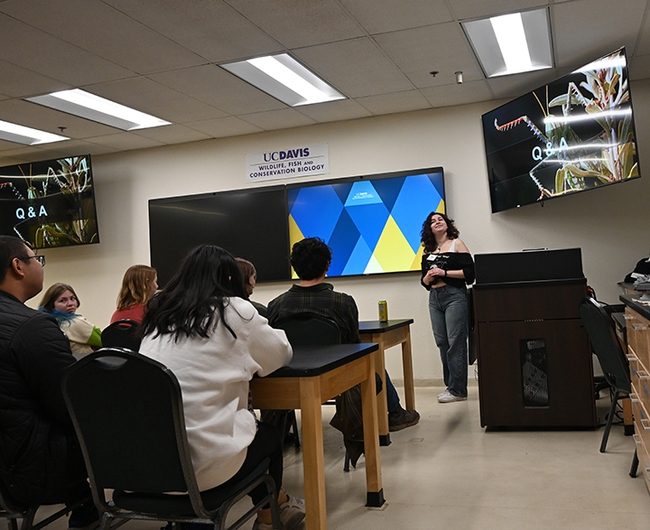
UC Davis student entomologist Sol Wantz begins her presentation on "Grasshoppers, Crickets and Katydids" at the Bohart Museum of Entomology open house. (Photo by Kathy Keatley Garvey)
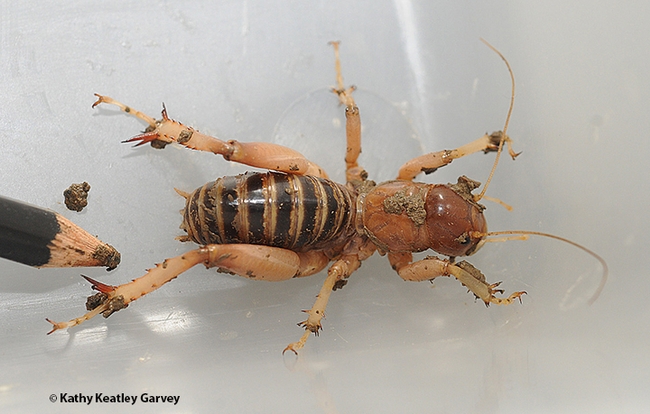
The Jerusalem cricket can reach 2.5 inches in length. (Photo by Kathy Keatley Garvey)
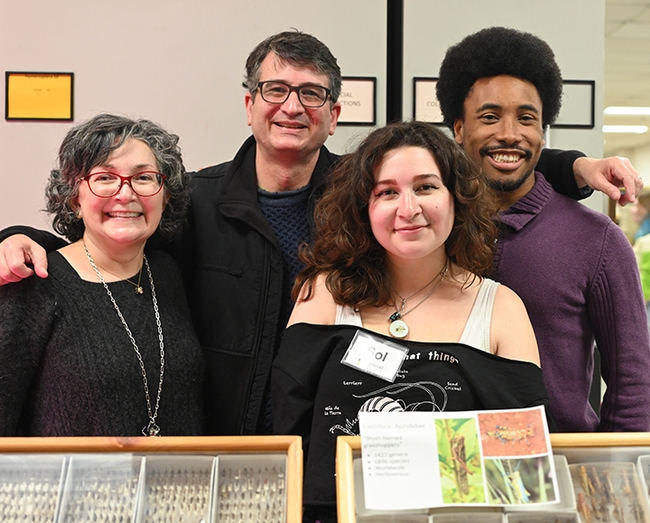
Sol Wantz with her parents Adam Wantz and Patti-Leggett Wantz of Belmont, and UC Davis researcher Ernest Walker, a UC Davis alumnus (biology). (Photo by Kathy Keatley Garvey)